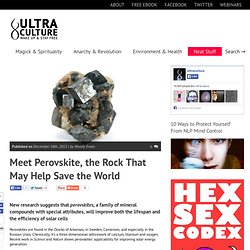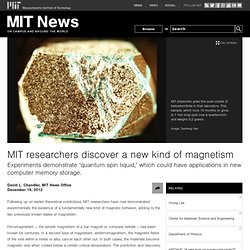

Scientists ‘freeze’ light for an entire minute. In what could prove to be a major breakthrough in quantum memory storage and information processing, German researchers have frozen the fastest thing in the universe: light.

And they did so for a record-breaking one minute. It sounds weird and it is. The reason for wanting to hold light in its place (aside from the sheer awesomeness of it) is to ensure that it retains its quantum coherence properties (i.e. its information state), thus making it possible to build light-based quantum memory. And the longer that light can be held, the better as far as computation is concerned. Accordingly, it could allow for more secure quantum communications over longer distances.
Needless to say, halting light is not easy — you can’t just put in the freezer. But light can be slowed down and even halted altogether. For this particular experiment, researcher Georg Heinze and his team converted light coherence into atomic coherences. Image: Heinze et al. References: New Scientist, American Physical Society. Sound wave 3Dvolution: Japanese scientists move objects using acoustic levitation. Enlightening stuff. Neat Stuff Published on December 16th, 2013 | by Woody Evans New research suggests that perovskites, a family of mineral compounds with special attributes, will improve both the lifespan and the efficiency of solar cells Perovskites are found in the Ozarks of Arkansas, in Sweden, Cameroon, and especially in the Russian Urals.

Chemically, it’s a three-dimensional latticework of calcium, titanium and oxygen. Recent work in Science and Nature shows perovskites’ applicability for improving solar energy generation. Kevin Bullis reports: “Unlike conventional solar cell materials, the new material doesn’t require an electric field to produce an electrical current. Gary Hodes’ work in Science points out that today’s thin film solar cell assemblies have the disadvantage of relying on rare elements, such as tellurium, gallium, and indium.
Bright days are ahead, brothers and sisters. About the Author. Scientists Just Discovered a New Force That's Stronger Than Gravity. Polska Agencja Prasowa. 12.06.

Warszawa (PAP) - Naukowcom udało się po raz pierwszy teleportować informację pomiędzy dwoma chmurami gazu – informuje Science Daily. Autorzy eksperymentu zapewniają, że każde podejście do doświadczenia zakończyło się powodzeniem. „To niezwykle ważny krok dla badań nad informacją kwantową, że udało się osiągnąć tak stabilne wyniki i że każda próba była udana” – powiedział Eugene Polzik z Instytutu im. Nielsa Bohra w Uniwersytecie Kopenhaskim, lider projektu. W trakcie eksperymentu gaz, w tym przypadku cez, zamknięty był w oddzielnych pojemnikach, które nie były ze sobą w żaden sposób połączone.
W trakcie badań pojemniki były od siebie oddalone o pół metra. Artykuł opisujący eksperyment opublikowano w piśmie Nature Physics. Stm/ ula/ Scientists Just Discovered a New Force That's Stronger Than Gravity. Quantum weirdness: What we call 'reality' is just a state of mind. A lifetime studying quantum mechanics has convinced Bernard d'Espagnat that the world we perceive is merely a shadow of the ultimate reality What quantum mechanics tells us, I believe, is surprising to say the least.

It tells us that the basic components of objects – the particles, electrons, quarks etc. – cannot be thought of as "self-existent". The reality that they, and hence all objects, are components of is merely "empirical reality". This reality is something that, while not a purely mind-made construct as radical idealism would have it, can be but the picture our mind forces us to form of ...
Of what ? How did I arrive at this conclusion? Even though this connection-at-a-distance does not permit us to transmit messages, clearly it is real. I soon found out, as often happens, that these things had been known for quite a long time. Are the objects we see just pale projections of quantum reality? The outcome confirmed my anticipations. Source: guardian.co.uk Related Posts. Microsoft Word - pxc387434.doc - wireless-power-transmission.pdf. Researchers discover a new kind of magnetism. Following up on earlier theoretical predictions, MIT researchers have now demonstrated experimentally the existence of a fundamentally new kind of magnetic behavior, adding to the two previously known states of magnetism.

Ferromagnetism — the simple magnetism of a bar magnet or compass needle — has been known for centuries. In a second type of magnetism, antiferromagnetism, the magnetic fields of the ions within a metal or alloy cancel each other out. In both cases, the materials become magnetic only when cooled below a certain critical temperature.
The prediction and discovery of antiferromagnetism — the basis for the read heads in today’s computer hard disks — won Nobel Prizes in physics for Louis Neel in 1970 and for MIT professor emeritus Clifford Shull in 1994. “We’re showing that there is a third fundamental state for magnetism,” says MIT professor of physics Young Lee. Finding the evidence The material itself is a crystal of a mineral called herbertsmithite. MATH is SWEET! (High Speed Honey Coiling) - Smarter Every Day 53. Awesome HD Slinky Slow-Mo.